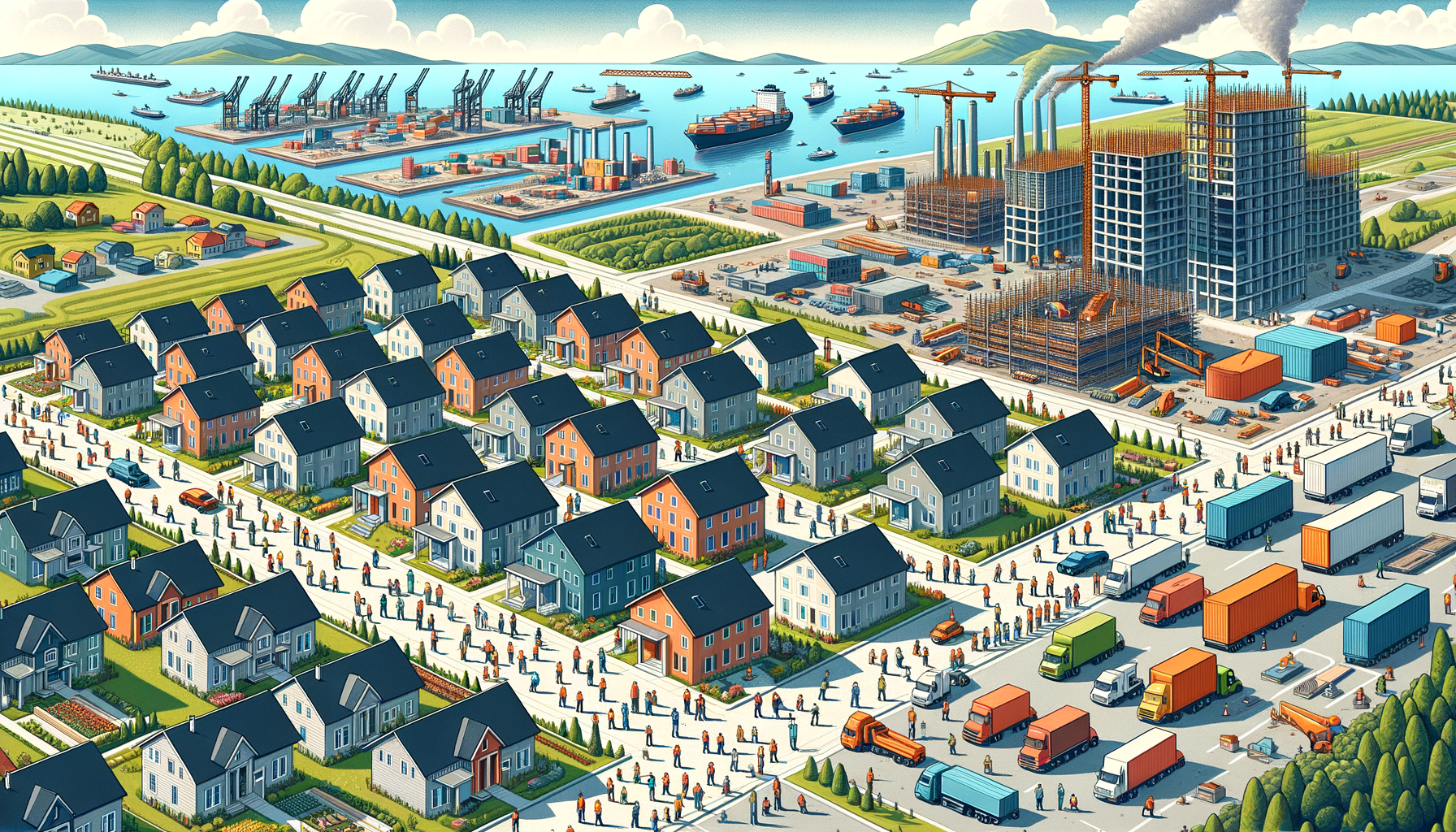“Booming Construction: An Insight into the Increasing Completion of Homes”
The housing market is often seen as a mirror, reflecting broader economic trends and consumer behaviors. A recent uptick in the completion of newly constructed homes indicates more than just a shift in housing dynamics—it hints at potential relief from the housing shortage and provides a fascinating insight into the resilience of the building industry amidst ongoing supply chain constraints.
**Understanding the Trends: An Increase in Home Completions**
In recent months, there has been a marked increase in the number of homes reaching completion. This signals a robust response from homebuilders who are ramping up efforts to meet the sustained demand for housing. While the surge in completions is a positive sign, it is essential to decipher the layers behind this trend to fully understand its implications.
Firstly, the increase in home completions comes after a period where construction delays were rampant. These delays can be attributed largely to disruptions in the supply chain, labor shortages, and other pandemic-induced complexities. Builders have now begun to overcome these hurdles, catching up on backlogs and pushing toward the finish line on numerous projects.
**The Role of Supply Chain Recovery**
The heart of many delays in the construction industry can often be traced back to the supply chain. Initially, the pandemic caused significant disruptions: factories shuttered, shipping delays became commonplace, and shortages of crucial materials spiked. As the global economy recovers and adapts, improvements in the supply chain have been vital.
Factories have ramped up production to meet renewed demand, and shipping companies have adjusted operations to better handle the challenges posed by COVID-19. Moreover, there’s an increased push towards local sourcing of materials which not only reduces delays but also lessens the carbon footprint associated with long-distance transportation of building materials.
**Labor Market Dynamics**
The construction sector has also faced its share of labor market challenges. With a significant portion of the workforce sidelined due to health concerns or lockdown measures, the industry struggled to maintain its pre-pandemic pace. However, with the easing of restrictions and a concerted effort to vaccinate the population, there’s been a gradual return to normalcy.
Additionally, more resources are being funneled into training and recruiting efforts aimed at addressing the labor shortage in the long term. Apprenticeship programs and vocational training schools are seeing increased interest, suggesting a robust pipeline of future construction professionals.
**Impact on Housing Supply and Affordability**
With more homes reaching completion, the most direct impact is on housing supply. In many regions, the housing market has been tightly squeezed, with demand far outstripping supply. This imbalance has driven up home prices, putting homeownership out of reach for many first-time buyers.
The increase in home completions could begin to alleviate these pressures. More homes on the market mean more options for buyers, which can help moderate price growth. However, it’s important to note that this is a gradual process. While the increase in completions is a step in the right direction, it is only one part of the solution to the housing affordability crisis.
**Technological Innovations in Homebuilding**
It’s also worth noting the role of technological advancements in boosting construction efficiency. Innovations such as prefabricated homes and 3D printing are on the rise, promising to speed up the construction process and reduce costs. Prefabricated sections are built in a controlled factory setting and then assembled onsite, significantly reducing the construction timeline.
Additionally, more builders are incorporating smart technology into new homes, responding to consumer demand for energy-efficient and connected living spaces. These homes, equipped with smart thermostats, energy-efficient appliances, and solar panels, are not just modern; they’re also more sustainable and economical in the long run.
**Regional Differences and Future Outlook**
The distribution of new home completions can vary significantly by region, influenced by factors such as local economic conditions, regulatory environments, and geographic constraints. For example, states with more open land like Texas and Florida are seeing a faster pace of building compared to more densely populated or geographically constrained areas like New York or California.
Looking forward, the outlook for the construction industry appears cautiously optimistic. While challenges related to supply chains and labor markets remain, the strategic adjustments made by stakeholders promise a more stabilized building environment.
Moreover, with the Federal Reserve’s moves to adjust interest rates, financing costs will play a crucial role. Lower interest rates can stimulate the construction sector by making borrowing more affordable, whereas higher rates might have a cooling effect.
**Engaging the Community and Policy Impact**
The role of local and federal policies cannot be overstated in shaping the housing market landscape. Zoning laws, building regulations, and housing policies directly impact what, where, and how much builders can build. Effective policymaking can encourage more environmentally friendly building practices and ensure that the surge in home completions leads to a diverse range of housing options accessible to all income levels.
Community engagement is also crucial. As neighborhoods expand and new areas are developed, incorporating community feedback and integrating local needs into planning processes ensure that the growth is sustainable and equitable.
**In Summary**
The recent increase in home completions is a beacon of progress in the housing market, pointing towards potential ease in the housing supply crunch and a gradual return to normalcy post-pandemic. The holistic effect of this boost will depend essentially on continuous improvements in supply chain logistics, labor market conditions, technological advancements, and supportive policymaking.
For potential homeowners and investors, this may be a time of opportunity. Monitoring these trends and understanding the broader economic indicators will be key in making informed decisions in the ever-evolving landscape of real estate.

